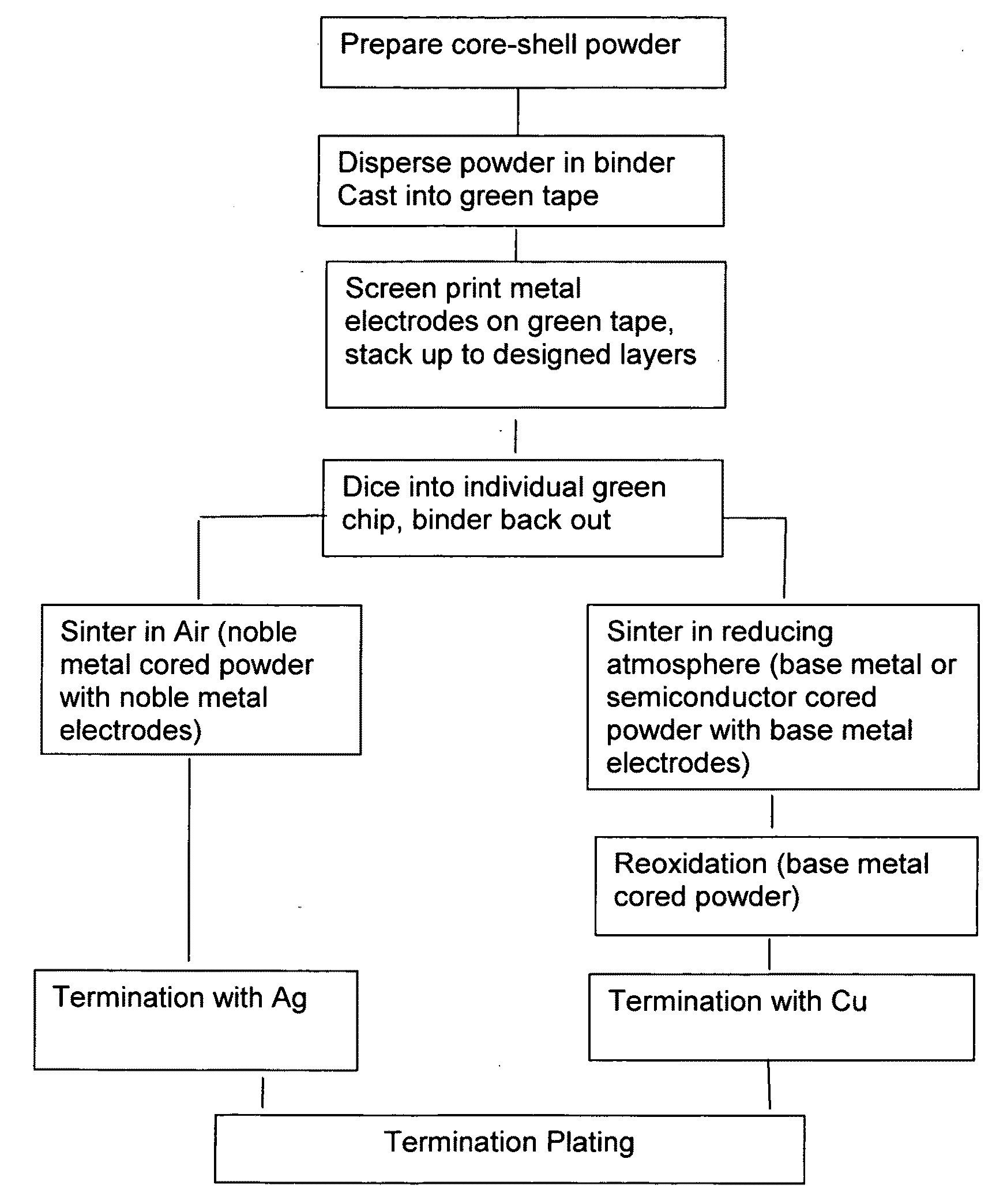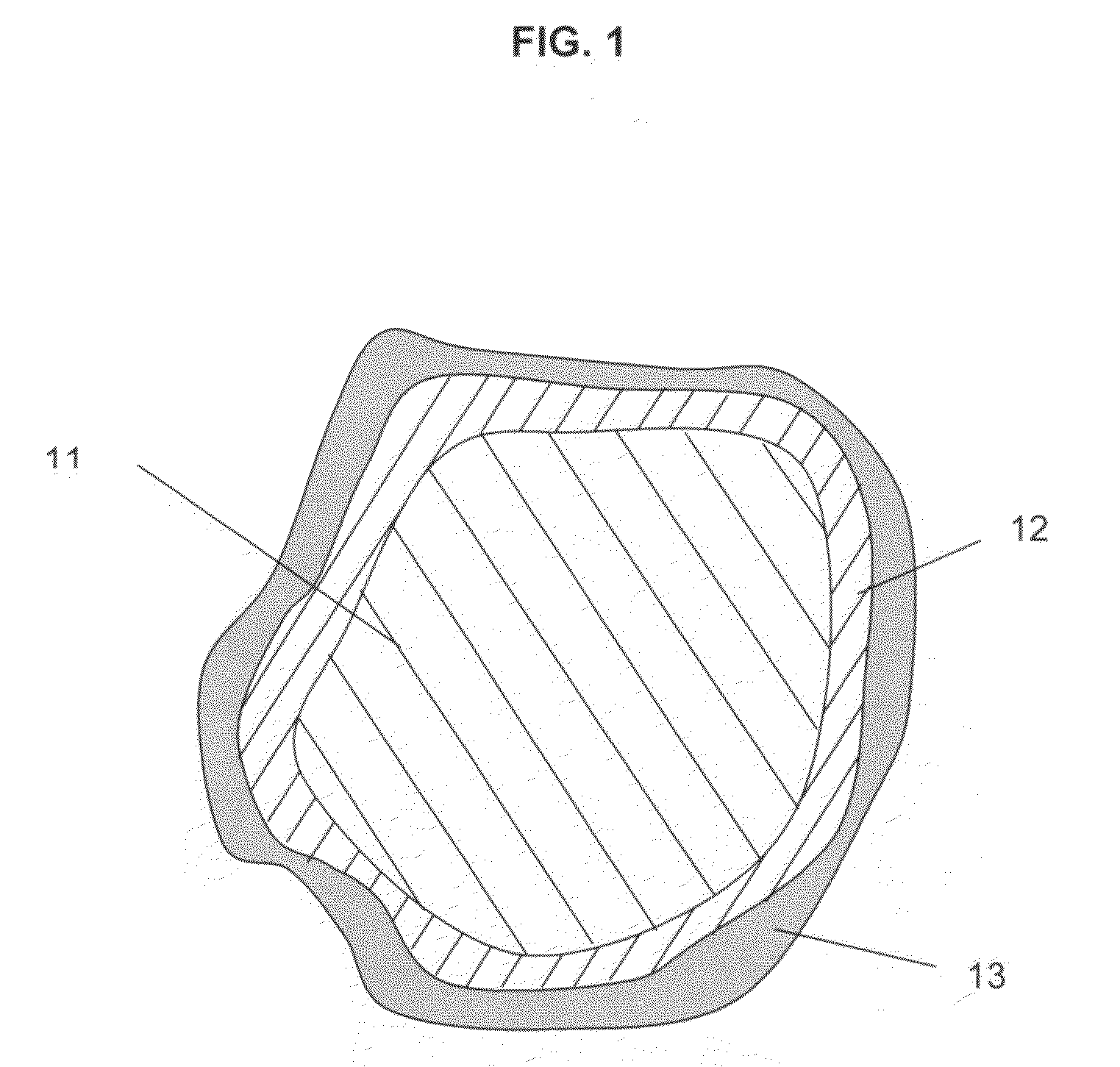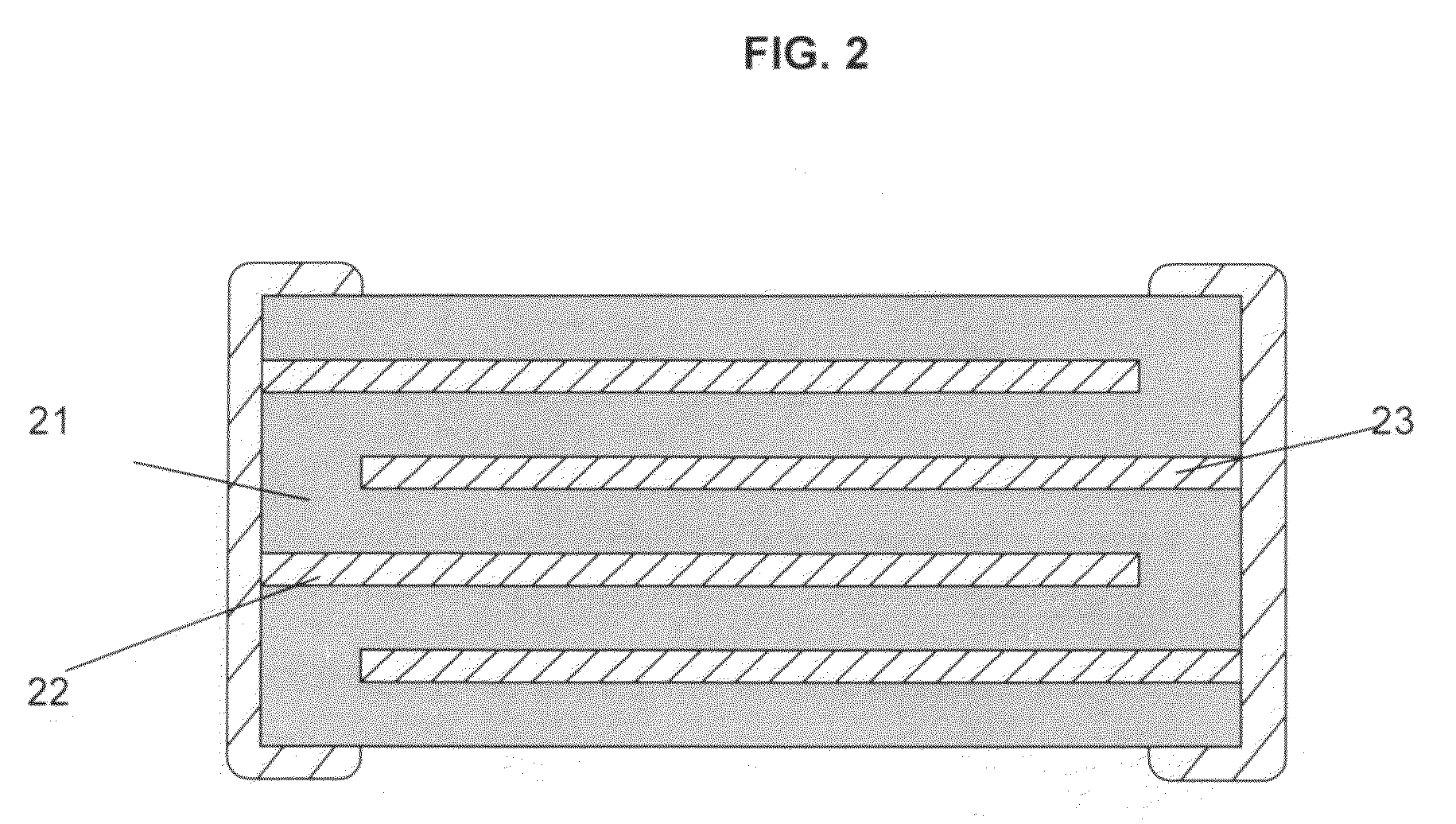Core-shell structured dielectric particles for use in multilayer ceramic capacitors
- Summary
- Abstract
- Description
- Claims
- Application Information
AI Technical Summary
Benefits of technology
Problems solved by technology
Method used
Image
Examples
example 1
Nickel Powder With Sol-Gel Coated BaTiO3
[0051]A sol solution of 0.2 mol / L barium titanate was prepared by mixing 0.2 mol / L barium isopropoxide Ba(OC3H7)2 solution (Chemat, U.S) with 0.2 mol / L titanium amyloxide Ti(OC5H11)4 solution (Aldrich, U.S) and refluxing at 80° C. overnight as a stock solution. Then 400 g of pre-dispersed nickel powder (average particle size D50=1.5 μm, surface area=1.0 m2 / g) was added to 1 liter of the above pre-prepared barium titanate sol solution, continuously stir and refluxing for 4 more hours.
[0052]Distilled water was slowly added to the powder coating vessel while stirring to hydrolyze the sol solution into a BaTiO3 gel solution to be coated on the nickel powder. One liter of 0.2 mol / L BaTiO3 gel solution coats 400 g of metal powder to a thickness of 20 nanometers. Shell thicknesses from 10 nanometers to 50 nanometers were obtained by adjusting the concentration of the sol solution in the range from 0.1 mol / L to 0.5 mol / L. The coated core-shell parti...
example 2
Silver Flake With Sol-Gel Coated BaTiO3
[0053]The same barium titanate sol stock solution made in Example 1 was used to coat pure silver flakes in the same way as illustrated as Example 1. BaTiO3 shells in the thickness range from 10 nm to 50 nm were obtained as five different core-shell samples as shown in Table 1.
example 3
Sol-Gel Derived Ba0.6Sr0.4TiO3 Shells on Ni Core Particles
[0054]0.6 liters of 0.2 mol / L barium isopropoxide Ba(OC3H7)2 solution, 0.4 liters of 0.2 mol / L strontium isoproppoxide Sr(OCH(CH3)2)2 solution, and 1.0 liter 0.2 mol / L titanium amyloxide Ti(OC5H11)4 solution were added in a glass vessel together and refluxed at 80° C. overnight to obtain 2 liters of 0.2 mol / L Ba0.6Sr0.4TiO3 sol solution. 400 g nickel powder (average particle size D50=1.5 μm, surface area=1.0 m2 / g) was then dispersed into a glass vessel loaded with 1.06 liters of the above prepared 0.2 mol / L Ba0.6Sr0.4TiO3 stock solution. Distilled water was added slowly to the nickel powder coating vessel while stirring to hydrolyze the sol solution into a Ba0.6Sr0.4TiO3 gel solution for coating on the well dispersed nickel powder, producing a shell 20 nanometers in thickness after being dried and annealed.
PUM
| Property | Measurement | Unit |
|---|---|---|
| Thickness | aaaaa | aaaaa |
| Thickness | aaaaa | aaaaa |
| Fraction | aaaaa | aaaaa |
Abstract
Description
Claims
Application Information
 Login to View More
Login to View More - R&D
- Intellectual Property
- Life Sciences
- Materials
- Tech Scout
- Unparalleled Data Quality
- Higher Quality Content
- 60% Fewer Hallucinations
Browse by: Latest US Patents, China's latest patents, Technical Efficacy Thesaurus, Application Domain, Technology Topic, Popular Technical Reports.
© 2025 PatSnap. All rights reserved.Legal|Privacy policy|Modern Slavery Act Transparency Statement|Sitemap|About US| Contact US: help@patsnap.com



